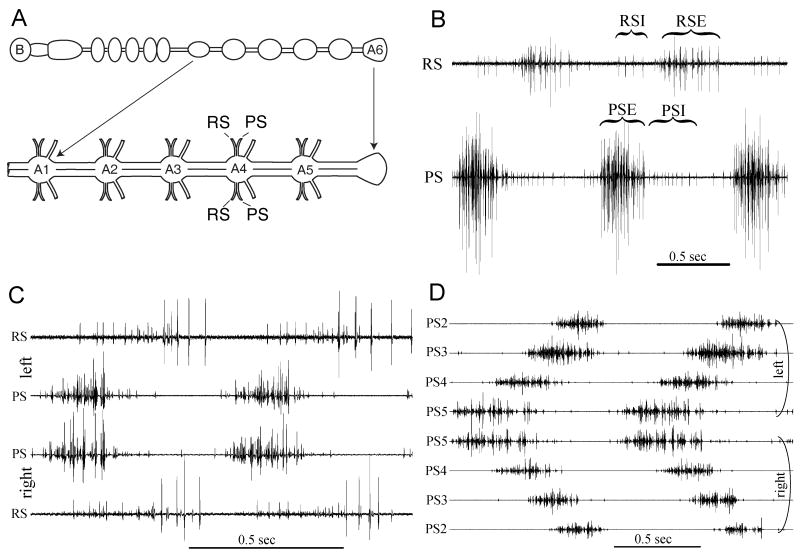Fig. 2.
Features of the motor pattern that drives swimmeret movements. (A) Cartoon showing the positions of extracellular electrodes that recorded each trace in B and C. B: Brain. A1, A6: First and last abdominal ganglia. A2, A3, A4, and A5: abdominal ganglia that innervate unmodified swimmerets. (B) Simultaneous recordings from anterior (RS) and posterior (PS) branches of the nerve innervating one swimmeret that show two cycles of the normal swimmeret motor pattern. PSE, PSI: power-stroke excitor and power-stroke inhibitor units. RSE, RSI: return-stroke excitor and return-stroke inhibitor units. (C) Simultaneous bilateral recordings from power-stroke (PS) and return-stroke (RS) branches of the two swimmeret nerves that innervate the pair of swimmerets on the same abdominal segment. Left and right swimmerets are innervated by separate pools of motor neurons, but homologous neurons on both sides are active simultaneously. (D) Two cycles of spontaneous activity recorded simultaneously from left and right PS branches of swimmeret nerves from ganglia A2, A3, A4, and A5. These bursts of PS spikes in neighboring ganglia show the characteristic posterior-to-anterior progression of activity.

